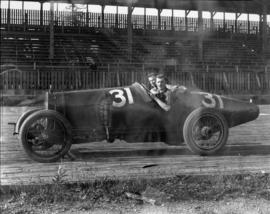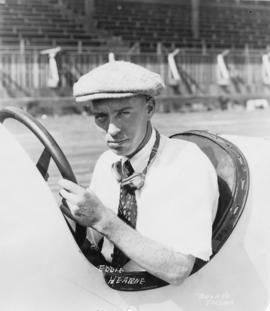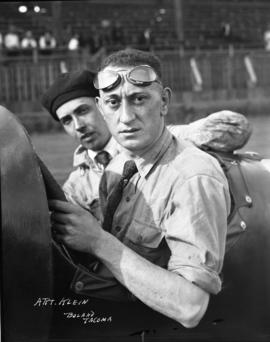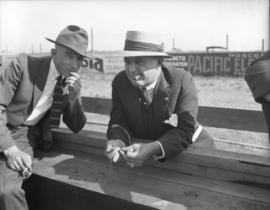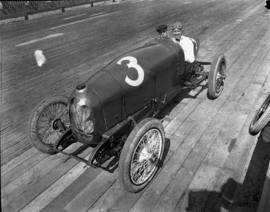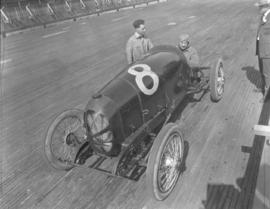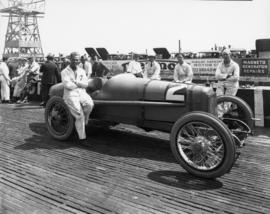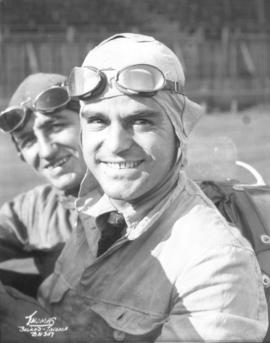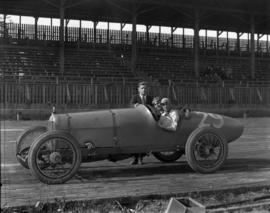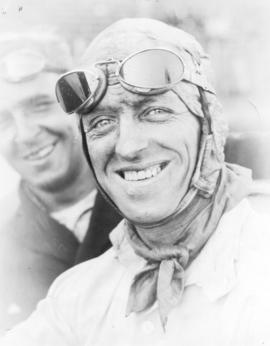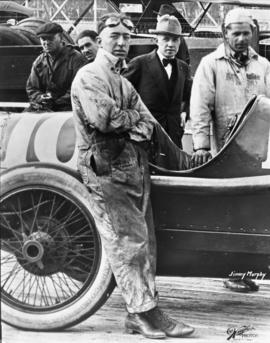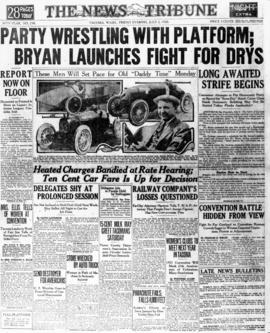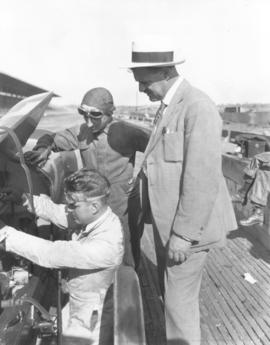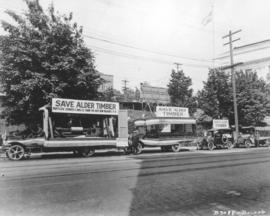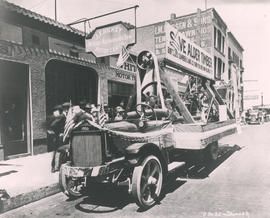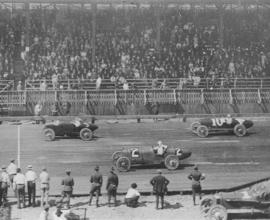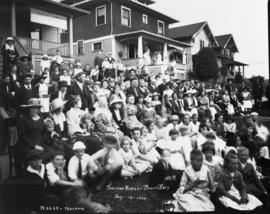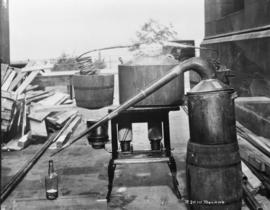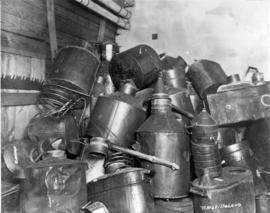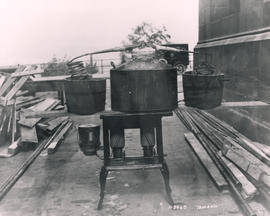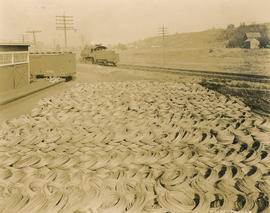- Item
- 1920-07
Part of Marvin Boland Photographs
This is driver Eddie O'Donnell at the wheel of a Duesenberg race car parked on the board track of the Tacoma Speedway in July of 1920. The other man next to him is Lyall Jolls, his mechanic. Mr. O'Donnell had arrived in Tacoma as part of the four-man Duesenberg team of Tommy Milton, Eddie Miller, and Jimmy Murphy, ready to compete in the 225-mile July 5th race. Although the Duesenberg sports the number 29, the local newspaper The Tacoma Ledger placed the number 9 on the car. Mr. O'Donnell did not drive his own car during the race as he had generously opted to lend the vehicle to a competitor, Ralph DePalma, so that race fans would not be disappointed in Mr. DePalma's withdrawl. Teammate Eddie Miller in turn lent his car to Mr. O'Donnell for the race in a losing cause. 1920 was the last time local fans were able to watch Mr. O'Donnell in action as he died later in the year during a race in California. Mr. Jolls was also killed in the same wreck. TPL-100
O'Donnell, Eddie; Jolls, Lyall; Tacoma Speedway (Lakewood); Racetracks--Lakewood--1920-1930; Automobile racing--Lakewood--1920-1930; Duesenberg automobile; Racing automobiles--1920-1930;

